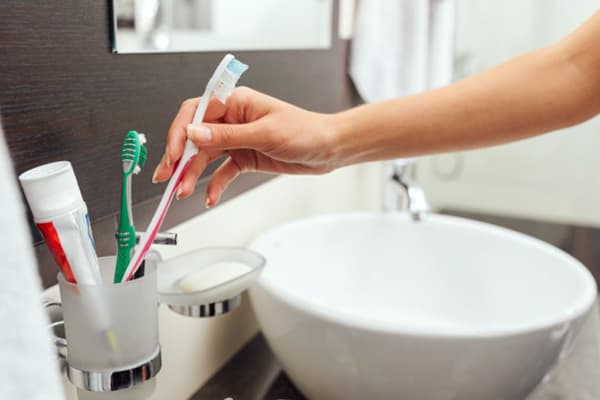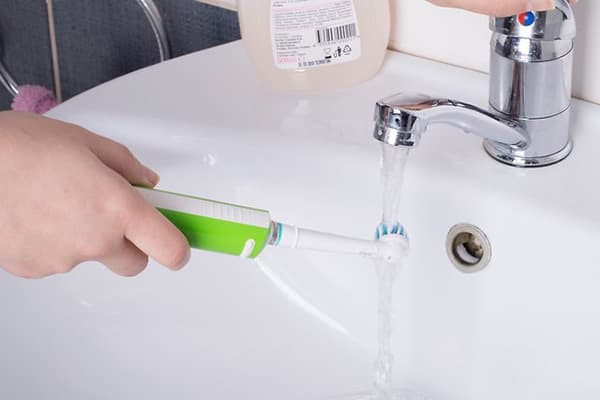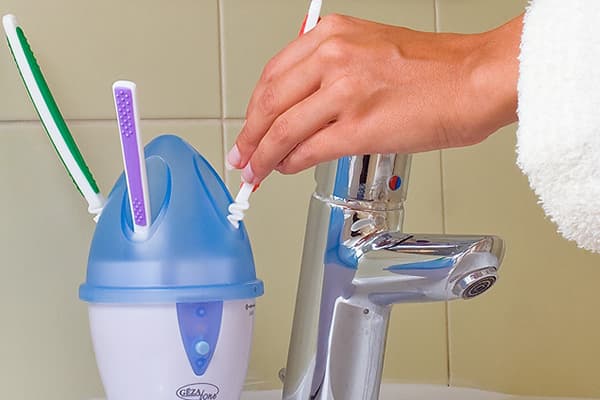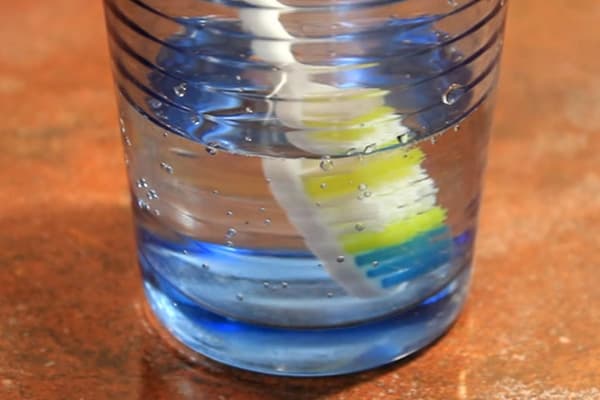Everyone needs to know: the rules of daily toothbrush care
Everyone knows that you need to care for your toothbrushes. However, few conscientiously observe all the precepts of dentists and microbiologists. This is partly the reason for many diseases that could have been avoided with proper handling of this subject of personal hygiene.
Where and how to store a toothbrush?
For most people, the answer to this question is obvious - of course, in a glass on a shelf in the bathroom! Firstly, there she is always in sight, and there is no need to spend precious minutes in the morning on her search. Secondly, it is a matter of habit. Well, and thirdly, it is this method of storing toothbrushes that is recommended by specialists - dentists. They insist that all the nuances are respected:
- The brush should stand bristle up. The fact is that after use it remains moist and creates a favorable environment for the development of bacteria and fungi. If you place it with the cleaning part inside the glass, the water will evaporate much more slowly, which means that microorganisms will multiply more actively and in large quantities.
- The distance from the toilet to the shelf with accessories for cleaning teeth should not be less than 3 meters. Particles of excrement and urine, invisible to the eye, overcome this distance, flying around during the discharge of water and settling on various objects. By the way, closing the lid before pressing the button is a good habit, especially if you have to use the combined bathroom.
- When using one glass to store several brushes, make sure that they do not touch each other. This is due to the possible transmission of infection - when one of the family members suffers from caries or herpes (not to mention more serious diseases), other households can become infected with the same viruses and microbes. True, this requires direct contact of the cleaning heads.
As for storage in a special case, it is justified only as a short-term measure - for example, in travel. The reason for this restriction is all the same harmful microorganisms that feel great in a confined space, where heat and high humidity are retained. If you constantly keep the brush in a plastic box, it will quickly turn into a hotbed of germs and can become hazardous to health.
Cleanliness rules
Speaking about how to care for toothbrushes, it would be wrong to ignore the topic of cleaning them. Some men and women believe that this personal hygiene item needs washing only in exceptional cases - for example, in the event of a fall on the floor. This opinion is erroneous.
A huge number of microorganisms live in the mouth; most of them are absolutely safe for humans, but some are conditionally pathogenic. Conditionally - because immunity suppresses their vital functions. When brushing teeth, they settle on the bristles and, once in suitable conditions, begin to multiply rapidly. With each subsequent use, a reverse exchange of bacteria takes place - some of them move from the brush to the mucosa. If immunity for some reason weakens, it will be difficult for him to cope with a huge colony of microbes, and as a result, a person will become vulnerable to various diseases (most often respiratory).
During storage of the brush, a clearly pathogenic flora can also get on it - for example, Escherichia coli (along with splashes spreading around when flushing the toilet), as well as any viruses and bacteria,infection with which occurs by airborne droplets (if someone sneezes in the bathroom without hiding, saliva microparticles will be everywhere, including on the heads of toothbrushes).
In addition, microscopic food debris can get stuck in the bristles - if not removed, they begin to decompose and become an additional source of infection.
Based on the foregoing, hygiene rules come down to three main points:
- Before the first use of the toothbrush, it must be washed with 72% laundry soap and soaked for 10-15 minutes in soda solution.
- Wash the brush daily before and after brushing your teeth using soap.
- Every three months, replace the brush with a new one.
Is disinfection necessary?
As a rule, washing with plain soap and water is enough to prevent the growth of microorganisms on the toothbrush. Nevertheless, there are various disinfectors on sale, the manufacturers of which promise to get rid of E. coli, streptococci, herpes viruses and other dangerous inhabitants of the microworld. The operation of these devices is based on ultraviolet radiation, and for complete sterilization it takes only 5-10 minutes.
Many people consider the purchase of such a device justified. Unfortunately, this is not so. Ultraviolet is not capable of killing all pathogenic microflora for such a short time. Moreover, not all bacteria and viruses are so susceptible to it that they die from a small dose of radiation.
Truly effective sterilization involves pre-soaking in a disinfectant solution and subsequent heat treatment at high pressure in an autoclave. Only in this way can the death of all possible microorganisms be achieved.
A toothbrush is not a surgical instrument, and there is no need to be sterile. According to the standard, it is allowed to have 1000 CFU (colony forming bacteria) per 1 cubic centimeter (for comparison, in tap water this figure should not exceed 50 CFU).
Additional disinfection may be needed only during an illness when there is a risk of overdose (for example, with tonsillitis, bronchitis, stomatitis, herpetic eruptions on the lip).
In this case, processing can be carried out in two ways:
- Soak the brush in miramistine or chlorhexidine for 5-10 minutes, then wash with soap and water under running water.
- Boil for 15 minutes (it should be noted that not every plastic is able to withstand such "execution", so the bristles can lose elasticity).
After recovery, the old brush should be disposed of immediately.
To care for toothbrushes is necessary, but there is nothing complicated about it. The main procedure that will have to be performed before and after each toothbrushing is washing with household soap. It takes no more than a minute, but it helps maintain hygiene and not be at risk of infectious diseases.



